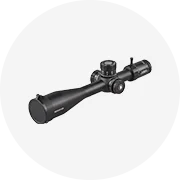
Hluru Nhà Máy Cung Cấp Đàn Kalimba Đàn Piano Ngón Tay 17 Phím Đàn Kalimba Nhạc Cụ Kèm Hiệu Ứng



















Chơi những giai điệu âm nhạc hay nhất là một thực tế với sự xuất sắc. chất lượng cao cello giá trên Alibaba.com. Các nhà sản xuất thiết kế những. chất lượng cao cello giá một cách hoàn hảo và cung cấp chúng trong một bộ sưu tập đa dạng bao gồm các kích thước khác nhau. Mỗi người yêu âm nhạc sẽ tìm thấy thích hợp nhất phù hợp với nhu cầu của họ và túi tiền của họ. Việc lựa chọn bao gồm. chất lượng cao cello giá phù hợp với cả trẻ em và người lớn, người chơi chuyên nghiệp, huấn luyện viên và thực tập sinh cũng như các cá nhân và nhóm khác quan tâm đến âm nhạc.
Những điều này. chất lượng cao cello giá rất dễ nhìn vì vẻ ngoài thanh lịch của chúng. Điều này bổ sung cho âm thanh tuyệt đẹp mà chúng tạo ra, khiến trải nghiệm âm nhạc không thể nào quên. Các. chất lượng cao cello giá cứng cáp một cách ấn tượng vì chúng được làm bằng vật liệu chắc chắn khó vỡ, đặc biệt là khi được bảo quản thích hợp. Với chất lượng âm thanh vô song. chất lượng cao cello giá cung cấp, chúng rất linh hoạt và áp dụng cho các buổi biểu diễn solo và kết hợp với các nhạc cụ khác.
Các. chất lượng cao cello giá nổi bật trên Alibaba.com được tạo ra một cách sáng tạo để dễ dàng nắm giữ. Điều này giúp người chơi thoải mái và không bị gò bó, điều này rất cần thiết cho âm thanh chất lượng. Những cái này. chất lượng cao cello giá rất dễ sử dụng vì điều chỉnh chúng đơn giản và đạt được âm thanh cần thiết cho mỗi chuỗi. Duy trì những. chất lượng cao cello giá không tốn kém, vì chúng hiếm khi được phân tích. Tuy nhiên, trong trường hợp có sự cố, dây và các phụ kiện khác của chúng luôn có sẵn để sửa chữa.
Lựa chọn đúng. chất lượng cao cello giá từ các tùy chọn hấp dẫn trên Alibaba.com mang lại cho người mua lợi tức đầu tư tốt nhất. Đây là những điều hấp dẫn cho. chất lượng cao cello giá người bán buôn được hưởng ưu đãi hào phóng khi mua với số lượng lớn. Độ bền và chất lượng âm thanh khiến chúng xứng đáng với từng đồng chi tiêu.